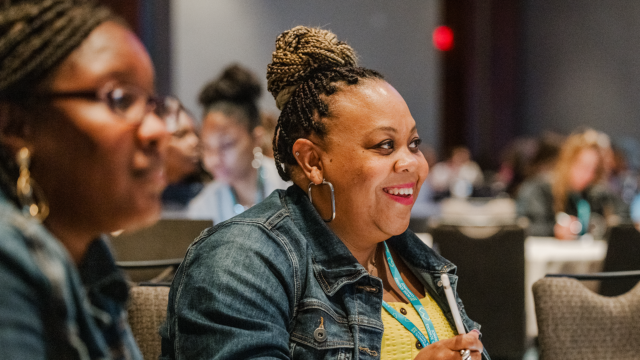
January 2nd is World Introvert Day. To mark the occasion, a few thoughts on everyone’s favorite topic: speaking up in class.
We can hear from everyone in the classroom. We just need to find ways to encourage all students to speak up—and remind ourselves to listen.
Be Aware
Speaking up is at the heart of what educators do everyday. Before the second cup of coffee it’s already “All eyes on me” at the head of the class. It’s part of teacher DNA!
Educators are so comfortably in command at the front of the room, sometimes we need to remind ourselves to think about the “quiet ones” who relish disappearing in the middle of the classroom.
These quiet ones, some of whom may be shy, others true introverts, likely comprise at least a third of the classroom. So how do we balance their less obvious needs with the “me, me, me” attention getters who tend to float to the top?
Enjoy the Silence
Many experts, including Susan Cain, author of Quiet, and Erik Palmer, an educator and Houghton Mifflin Harcourt program consultant, suggest waiting a beat or two between posing a question to your students and soliciting answers. This allows all students to not only ingest what you’ve thrown out, but also really digest it. Everyone benefits from the time to formulate a complete response: extroverts can use the pause to consider the substance of their reply, while introverts can formalize their communication plan.
Face the Fear
As a public speaking teacher, Palmer faces the quandary of what to do with students who fear talking in class on a daily basis. His take? Public speaking isn’t just a classroom or education requirement—it’s a necessary skill that everyone must develop to succeed in life. Palmer suggests treating it like any other discipline where students may need extra help along with patience, coaching, and practice. Add in time to build confidence in the speech content itself and a few trial runs in front of a trusted audience, and you’re in business.
Your quieter students probably aren’t going to love speaking up, but with time and encouragement they will eventually participate. Who knows, maybe you have a natural born orator sitting in the middle of your classroom!
##
Curious to learn more?
Susan Cain is the co-founder of Quiet Revolution (www.quietrev.com) and the author of the bestseller Quiet Power: The Secret Strengths of Introverts.
Erik Palmer is a program contributor to HMH Collections and the author of Well-Spoken: Teaching Speaking to All Students. You can read his full article here.
Have suggestions for looping everyone in the classroom into the discussion? We’d love to hear your thoughts!

















